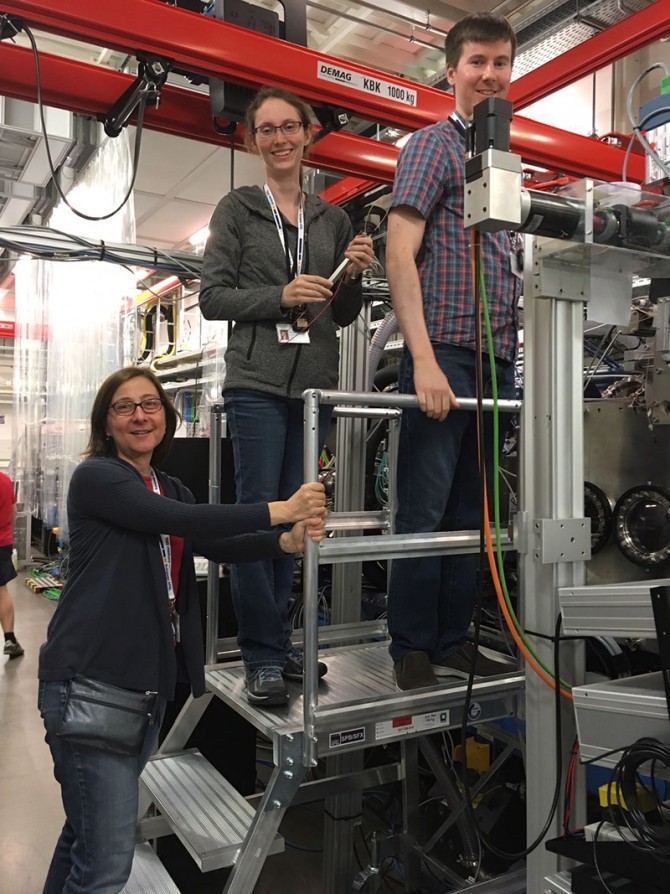Exposing secrets of ‘superbugs,’ bioprocesses continues with NSF grant
By Syl Kacapyr
Armed with some of the most powerful X-ray lasers in the world and a new grant from the National Science Foundation, researchers at Cornell are helping to provide an unprecedented look at the structural dynamics of once-unseen bioprocesses, including how some antibiotic-resistant bacteria, or “superbugs,” combat drugs.
The five-year, $22.5 million grant will continue funding BioXFEL, a multi-institutional research consortium established in 2013 to develop advanced imaging techniques for biological processes that are difficult, if not impossible, to see with conventional methods. Understanding such processes can improve the development of new drugs, materials and environmental technologies.
As a member of the consortium, Lois Pollack, professor and director of applied and engineering physics at Cornell, along with graduate students George Calvey and Andrea Katz, have developed a technique that allows scientists to watch proteins as they work, with near-atomic resolution.
Mix-and-inject serial crystallography (MISC) is a technique that can image bioprocesses happening in milliseconds, a biologically relevant timescale. The technique works by mixing small protein crystals with a substrate, and then bombarding the sample with a powerful X-ray laser.
The most advanced X-ray sources have the potential to pulse up to 27,000 times per second. The scattered light from each X-ray pulse provides an atomic snapshot of a catalytic reaction happening within the sample, allowing scientists to piece together each snapshot, much like a flipbook, to see the reaction in its entirety.
One application of the technique is to examine how bacteria resist antibiotics. In some cases, there are proteins that destroy antibiotics when they would otherwise be destroying bacteria, according to Pollack.
“Using our technology, protein crystals made by our collaborators are injected in the X-ray beam just after they’ve been mixed with antibiotic. We watch as the protein breaks a critical bond in the antibiotic, making it useless,” said Pollack.
In a 2017 study, the Pollack research group and collaborators demonstrated how MISC could be used to study the reaction of tuberculosis enzymes with the antibiotic ceftriaxone. And in June, her group participated in an experiment at the recently commissioned European X-ray Free-Electron Laser facility in Hamburg, Germany – the biggest and brightest source of X-rays in the world – to test a class of proteins that destroy penicillin-based antibiotics.
The results of the work will provide new insights into how better, more effective antibiotics can be engineered.
Cornell’s share of the renewed NSF grant will allow Pollack to continue the work with her collaborators.
“We just demonstrated the feasibility of this new method and so we’d like to really apply it to solve some very pressing problems,” said Pollack, adding that she and her collaborators are discussing how to expand the research in new directions.
The BioXFEL consortium is led by the University at Buffalo and the Hauptman-Woodward Medical Research Institute, and includes Arizona State University, the University of Wisconsin-Milwaukee, Stanford University, Rice University, the University of California, San Francisco, and Miami University in Ohio.
Syl Kacapyr is public relations and content manager for the College of Engineering.
Media Contact
Get Cornell news delivered right to your inbox.
Subscribe

